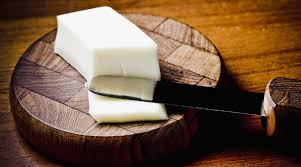Nourishing Traditions: Delving Deeper
posted on
March 6, 2020
Many traditional cultures valued animal fats above all other foods.
Today I will start to explore seven principles that form the base of the Nourishing Traditions way of eating.
PRINCIPLE #1: GET YOUR FATS RIGHT!
As a young girl taking home economics in school I was told that we must avoid animal fats if we are going to be healthy. They didn’t explain that animal fats are essential to good health, proper growth, fertility and longevity. That they are concentrated sources of energy and help to build cell membranes and many hormones. They satiate our bodies so we are not always looking for something to snack on. They are also very important for the fat-soluble vitamins A, D, E and K. . Animal fats contain saturated fat and cholesterol which are actually essential to good health!
We were taught that margarine and vegetable oils were the healthy fats. So like many people of my generation I just followed what I saw in magazines or watched on television. Many years later as I started to study the principle of Dr. Weston A. Price I realized the disservice I was actually doing to my health and the health of my family. When I had this lightbulb moment all the processed vegetable oils disappeared from my kitchen.
But what do you replace them with? We need to look back in time to when cultures were healthy. What did they consume? Animal fats like these;
- Butter
- Lard
- Tallow
- Duck and Goose Fat
- Virgin olive oil and other seed oils
- Coconut Oil
- Cod Liver Oil

Pure Pasture-Raised Pork Lard
Each of these animal fats has a use that they are best suited to. Butter for sourdough breads, lightly steamed veggies, mixed with spices and rubbed on meat, porridges and even coffee.
We use lard from our pasture-raised pigs for all kinds of cooking. My husband loves freshly made hash brown potatoes fried in lard. Tallow is also great for cooking. It makes the best French fries.
We do raise our own chickens, turkeys, ducks and geese. It is so simple to skim the fats off the pan when we roast a bird. I also use the bones to make nutrient rich bone broths. Usually there is a large amount of fat here to. I use these fats for cooking also.
Extra virgin olive oil and seed oils make great salad dressings. We like to use a variety of oils when we make homemade dressings. My absolute favorite is a blend of extra virgin olive oil, avocado oil and coconut oil.
I use virgin coconut oil for cooking because it has a high smoking point. I will mix it with tallow in the deep fryer to stretch the tallow. For me coconut oil is easier to get than grass-fed tallow. There is only so much fat on a beef. I usually run out of tallow before the next time we process beef.
And last, but not least are fish oils. Because they are high in vitamin D we tend to use these in the winter. We live fairly far north so the sun we do get coupled with the fact that it can get very cold here limits our sun exposure greatly. It seems like we are bundled up from November to March with the exception of a few days when it chinooks.
It has been the experience of myself and my family members that when we removed the highly processed vegetable oils from our diet that our health actually improved. When we ate these vegetable oils I always had borderline high cholesterol. Now we all test in the acceptable range even with eating the good oils every day, every meal. The only time we visit the doctor is for a diagnosis on an issue we are having or for broken bones.
To get you started on principle #1 Get Your Fats Right! I have included my recipe for a super easy Farmhouse Mayo. Give it a try. I’m sure you will be hooked like I am.
If you don’t want to miss out on this series, you can subscribe below. When you subscribe not only will you receive regular news from the farm, but also our great little booklet 4 Fabulous Pastured Pork Recipes as our free gift to you. It is loaded with great recipes for our pasture-raised pork that will nourish your body.



